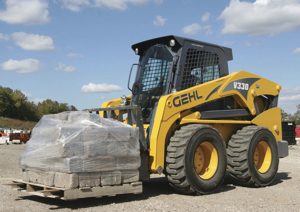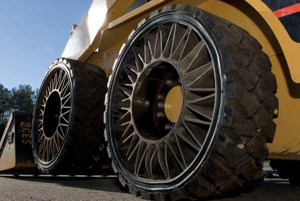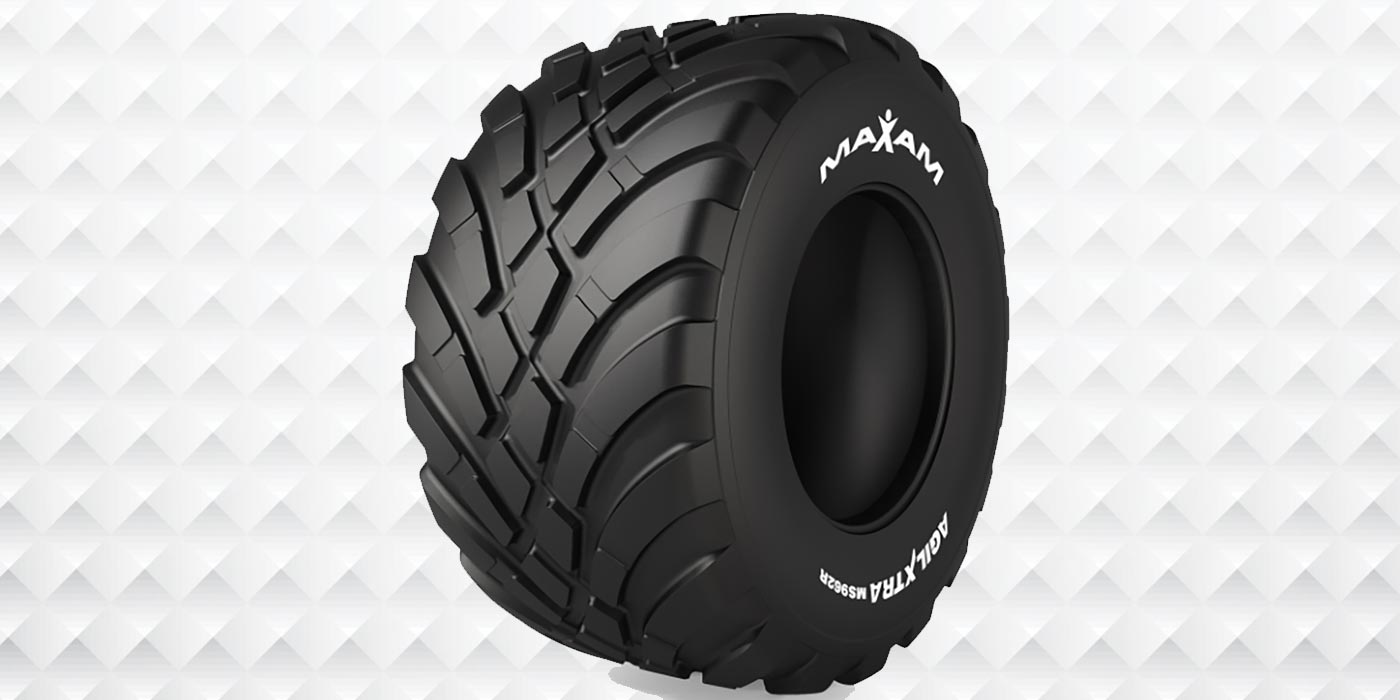Having inadequate traction could create a "slippery slope" for users of skid-steer tires. Considering that industries as diverse as construction, farming, dairy, landscaping, refuse and contracting are among those users, the problem could be widespread.
"Historically, many skid-steer users who experienced downtime from flats have filled their pneumatic tires with foam or replaced them with solid tires," explains Jack Olney, key account and business segment manager for Michelin Tweel Technologies. "These options result in machines with inadequate traction, handling and ride comfort."
Fortunately, new trends and technological advancements in skid-steer tire manufacturing are easing the pressure – literally.
"The Michelin X-Tweel SSL provides the advantages of no maintenance of air pressure," Olney says of his company’s one-year-old airless technology, a distinctive tire-wheel concept. "That goes along with easy mounting, damage resistance, increased operator comfort, reduced operator fatigue, improved productivity, longer wear life than pneumatic tires and excellent traction. It delivers no maintenance, no downtime and no compromise."

Most importantly, perhaps, it "performs in potentially hazardous situations when air loss poses a severe risk, such as in military applications."
But not all skid-steer applications deal with life-or-death situations. Many, according to Adam Brown, product marketing manager for agricultural and construction tires at Carlisle Transportation Products, are simply skid-steer loaders, light backhoes, compact tractors, aerial-work platform lifts and rough-terrain forklifts. Olney says many such typical users have adopted the use of foam-filled, semi-pneumatic and solid tires to reduce the possibility of flats and the resulting downtime.
"Pneumatic tires provide low rolling resistance, increased fuel mileage, a stable footprint and better handling characteristics," Olney says, "and radials provide further benefits of puncture resistance, greater operator comfort and increased traction.
"But solid tires are very durable, stable and resistant to cuts," he says. "They can last longer than foam-filled or pneumatic, but they have a high initial cost, do not provide shock absorption and have poor off-road traction. Additionally, they can be tough on the machine due to their heavy weight.
"With foam filling, tires are filled with expanding rigid polymer, making them puncture resistant and durable," he adds. "Both foam-filled and solid tires are heavier than pneumatics and can leave ruts and dents in surfaces. Due to their weight, they can place stress on the hubs, wheels, bearings, axle and transmission, and can shorten machine life. Both reduce operator comfort because they lack the vertical deflection provided by pneumatics. And if they’re damaged, foam-filled tires can chunk out and typically cannot be repaired.
"Semi-pneumatic tires are expensive and, although they have the advantages of deep treads and durability, they can be damaged where the sidewall perforations occur," he says.
Know Your Customer
Given these options, Brown sees three types of customers in the steer-skid market. "The first is a value customer who generally has lighter-duty applications and puts fewer hours on their machines," he says. "This customer sees price as the primary sales driver over other attributes. Carlisle offers this customer the Trac Chief line, which offers strength and durability at an attractive price.

"The second is the up-time customer who values keeping the machine operating as much as possible," he adds. "They want long life and outstanding performance to maximize productivity. The Carlisle Guard Dog HD meets the rugged needs of these customers.
"Last we have a small segment of the market that is looking for long life on hard surfaces and resistance to punctures," Brown says. "The Carlisle Ultra Guard LVT meets the unique needs of those customers. There’s a strong trend toward tires that resist going flat when operating in environments that naturally cut the tire. The Ultra Guard LVT meets that need head-on with much stronger construction and extremely deep tread, while retaining the air chamber of a pneumatic tire for performance and ride comfort.”
Nevertheless, pneumatics remains the dominant technology in tire manufacturing, according to Olney. This dominance is due to the tire’s low contact pressure, low vertical stiffness, low rolling resistance over rough surfaces and minimal or low mass for the load carried. Tire engineers developed what he calls a "mobility solution" in which those four key characteristics are captured in an airless radial. The result is the aforementioned Tweel.
"The Tweel delivers a large and consistent footprint, providing excellent stability and a low wear rate," he says. "This large footprint also allows the machine to harness more traction and therefore increase productivity. Because the spokes return energy in a progressive fashion, the Tweel all-but-eliminates wheel hop and greatly reduces shock to the operator and machine."
"This tire product is designed to operate as if it had air in it," he further explains, "so the contact pressure and ride feel like there’s air in it. An air-filled tire is just like a balloon, in that it wants to give the energy right back once compressed. With air-filled tires, especially under the conditions experienced by a skid-steer loader, there is a propensity to create torque and give the energy back, so these tires hop around. With Tweel technology, polyurethane spokes absorb the energy and then give it back in a very different way, which allows the machine to be stable."
The Road Ahead
Thanks partly to such new technologies, as well as to increases in construction and new housing starts, both experts see sales in the skid-steer market as rebounding, with continued gradual improvement expected.
"It’s making a slow return to pre-2009 demand levels," Olney says. "According to Yuengst Associates, demand will continue – especially for products that solve the downtime-and-comfort dilemma experienced by some users."
What can dealers do to help make that demand grow?
"Dealers need to understand what type of customer they are selling to in order to recommend the most appropriate skid-steer tire," Brown says.
Olney agrees, and offers another tip: "Dealers may want to have a number of different inventory solutions on hand, based on the customers’ application and frequency of replacement."













